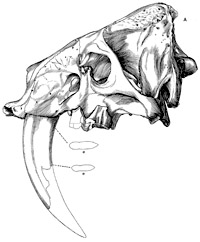Museum, University of Nebraska State
Date of this Version
7-1951
Document Type
Article
Citation
BULLETIN OF THE UNIVERSITY OF NEBRASKA STATE MUSEUM VOLUME 3 NUMBER 6, LINCOLN, NEBRASKA, JULY 1951
Abstract
I T SEEMS desirable at this time to present a graphic resume of the Nebraska Pleistocene, together with a summary of the stratigraphic sequences of the fossil vertebrates. This report is based on data taken from various publications' in addition to information gathered by the present writers during the past fifteen or more field seasons. Intensive work has been done in the past five years in connection with recovery of paleontological material in the areas where government dams are under construction (Schultz, Lueninghoener, and Frankforter, 1948; Schultz and Frankforter, 1948; Holder and Wike, 1949). The information in the present paper is derived, in large part, from a stratigraphic study of the contained fossil vertebrates in relation to the geomorphological and sedimentational history of the region. Conclusions are based on control information available at the present with the obvious realization that additional data may either clarify or modify these concepts. Since this is a resume and an interpretation, more detailed data with geological sections representing various localities will be published at a later date. No specific geological sections are referred to in the present paper, except in the case of the fills of the Terrace-2 complex. The present plan of presentation is intended to be both graphic and verbal, and is given in chronological sequence from earliest Pleistocene to Recent time. Each figure with the exception of the first is, therefore, a progressive developmt!'nt of the preceding one. It should be clearly understood that the plates represent composite information. The drawings have been stylized in order to make graphically clear a complex and involved sequence of events. No exact vertical or horizontal scale has been intended. To have adopted definite scales would have involved greater drafting difficulties without materially contributing toward clarification.
Included in
Entomology Commons, Geology Commons, Geomorphology Commons, Other Ecology and Evolutionary Biology Commons, Paleobiology Commons, Paleontology Commons, Sedimentology Commons


Comments
Copyright (c) 1951 University of Nebraska.